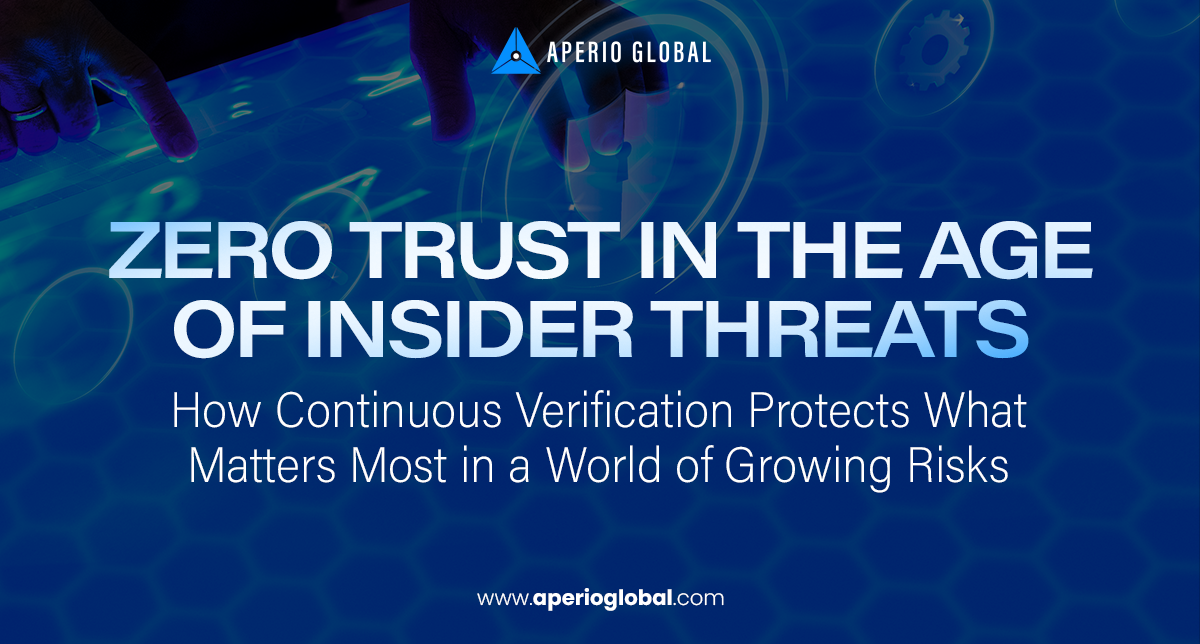
How Continuous Verification Protects What Matters Most in a World of Growing Risks
For years, cybersecurity strategies were built around the idea of a perimeter. Organizations placed firewalls and defenses at the edge of their networks, assuming that if an intruder could be kept outside, everything inside would remain safe. If you were within the perimeter, you were trusted. If you were outside, you were not.
That model no longer fits today’s reality. Missions extend far beyond fixed networks, with users connecting from countless devices and locations. Cloud adoption has blurred traditional boundaries. Most importantly, not all threats originate outside the system. Insider threats — whether intentional sabotage, compromised accounts, or simple human mistakes — are now among the most serious risks to mission security. When trust is automatically granted based on location or status, a single insider can inflict damage before detection ever occurs. This shift demands a new approach, and it begins with Zero Trust.
Zero Trust is not a single tool or product. It is a philosophy of security based on one guiding principle: trust no one and verify everyone. In this model, no user, device, or system is given implicit access. Every request must be authenticated, every action logged, and every connection continuously validated. The assumption is not that networks are secure, but that threats may already exist inside. By removing automatic trust, Zero Trust minimizes the impact of an insider threat and ensures security is built into every interaction.
The dangers of insider threats cannot be overstated. They take many forms: an employee deliberately stealing information, a contractor unknowingly falling for a phishing attack, or a trusted administrator misconfiguring a system in ways that open vulnerabilities. Because insiders already have some level of access, their actions often bypass the defenses organizations once relied upon. By the time the threat is discovered, the damage may already be significant. Zero Trust provides a countermeasure by requiring constant verification. Even insiders with legitimate credentials must prove their validity at every step. Any unusual behavior, abnormal access pattern, or suspicious activity can be flagged before it escalates.
Continuous verification lies at the heart of this approach. Instead of treating authentication as a one-time event at login, Zero Trust treats it as an ongoing process. A user may verify when starting their session, but they will also be verified again when requesting access to sensitive files, and yet again when attempting to execute high-risk actions. This constant monitoring allows organizations to ensure that the right people are accessing the right resources for the right reasons. For agencies operating in mission-critical environments, it provides assurance that security is never static, but adaptive to the needs and risks of the moment.
At Aperio Global, we work with agencies to embed Zero Trust architectures into their mission environments. Our focus is on aligning security with operations so that verification strengthens readiness rather than slowing it down. We integrate advanced authentication methods, behavioral analytics, and real-time monitoring to ensure that every access request is evaluated and every anomaly is investigated. This approach creates a security posture that is resilient yet unobtrusive, protecting sensitive missions without interfering with their execution.
The world of insider threats is only becoming more complex. As systems expand, as the volume of data increases, and as adversaries grow more sophisticated, organizations that rely on outdated perimeter-based models will find themselves increasingly exposed. Zero Trust represents more than a shift in technology; it represents a shift in mindset. Trust can no longer be assumed. It must be continuously earned, proven, and verified.
The stakes are too high to leave security to chance. Insider threats are real, they are growing, and they demand a stronger response. By implementing Zero Trust and continuous verification, agencies can protect what matters most, ensuring that missions remain secure even in the face of evolving risks. In an age where trust can be exploited, Zero Trust is mission readiness.